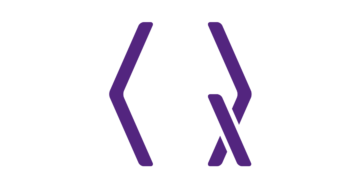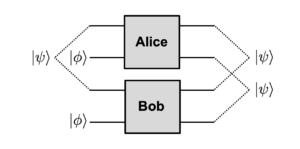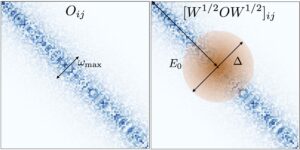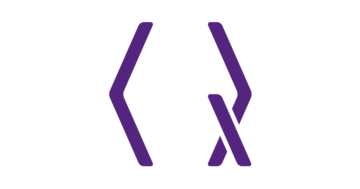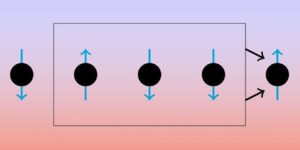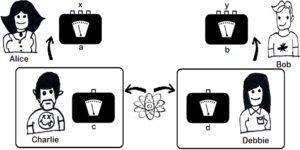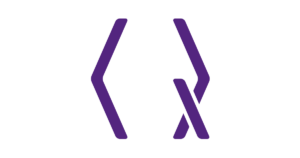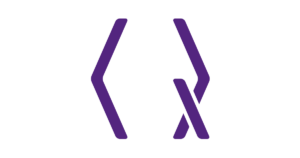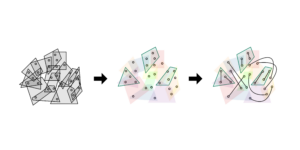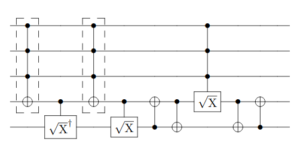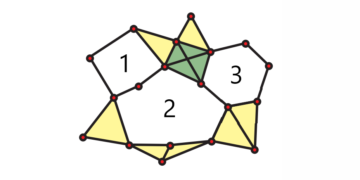1Department of Electrical and Computer Engineering, University of Arizona, Tucson, Arizona 85721, USA
2Department of Electrical Engineering and Computer Sciences, Indian Institute of Science Education and Research, Bhopal, Madhya Pradesh 462066, India
Find this paper interesting or want to discuss? Scite or leave a comment on SciRate.
Abstract
Recent constructions of quantum low-density parity-check (QLDPC) codes provide optimal scaling of the number of logical qubits and the minimum distance in terms of the code length, thereby opening the door to fault-tolerant quantum systems with minimal resource overhead. However, the hardware path from nearest-neighbor-connection-based topological codes to long-range-interaction-demanding QLDPC codes is likely a challenging one. Given the practical difficulty in building a monolithic architecture for quantum systems, such as computers, based on optimal QLDPC codes, it is worth considering a distributed implementation of such codes over a network of interconnected medium-sized quantum processors. In such a setting, all syndrome measurements and logical operations must be performed through the use of high-fidelity shared entangled states between the processing nodes. Since probabilistic many-to-1 distillation schemes for purifying entanglement are inefficient, we investigate quantum error correction based entanglement purification in this work. Specifically, we employ QLDPC codes to distill GHZ states, as the resulting high-fidelity logical GHZ states can interact directly with the code used to perform distributed quantum computing (DQC), e.g. for fault-tolerant Steane syndrome extraction. This protocol is applicable beyond the application of DQC since entanglement distribution and purification is a quintessential task of any quantum network. We use the min-sum algorithm (MSA) based iterative decoder with a sequential schedule for distilling $3$-qubit GHZ states using a rate $0.118$ family of lifted product QLDPC codes and obtain an input fidelity threshold of $approx 0.7974$ under i.i.d. single-qubit depolarizing noise. This represents the best threshold for a yield of $0.118$ for any GHZ purification protocol. Our results apply to larger size GHZ states as well, where we extend our technical result about a measurement property of $3$-qubit GHZ states to construct a scalable GHZ purification protocol.
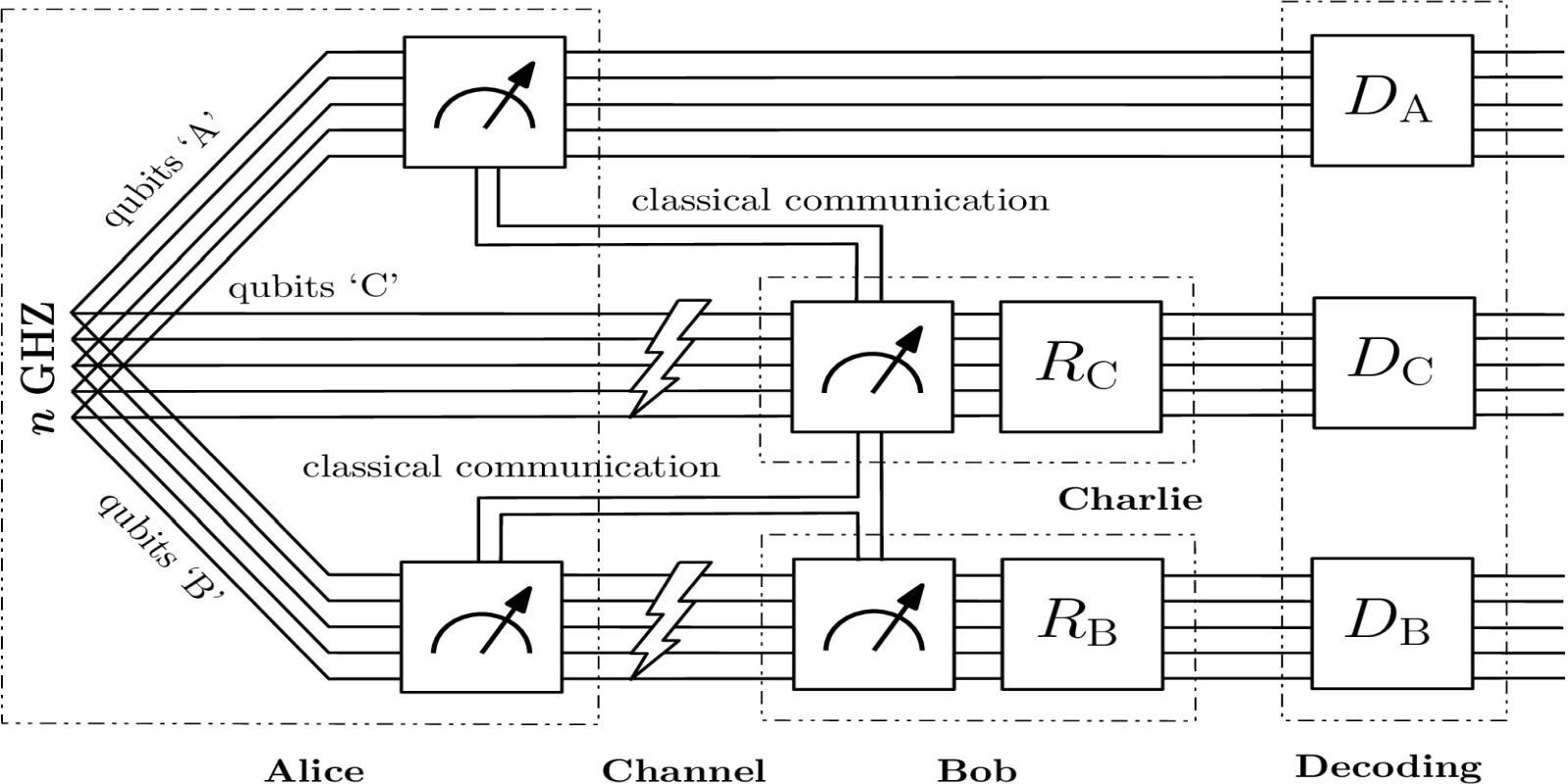
Featured image: New protocol to purify GHZ states using stabilizer codes
Our software is available github and zenodo.
Popular summary
► BibTeX data
► References
[1] Matthew B Hastings, Jeongwan Haah, and Ryan O'Donnell. Fiber bundle codes: breaking the $n^{1/2}$ polylog ($n$) barrier for quantum LDPC codes. In Proceedings of the 53rd Annual ACM SIGACT Symposium on Theory of Computing, pages 1276–1288, 2021. 10.1145/3406325.3451005. URL https://arxiv.org/abs/2009.03921.
https://doi.org/10.1145/3406325.3451005
arXiv:2009.03921
[2] Pavel Panteleev and Gleb Kalachev. Quantum LDPC Codes with Almost Linear Minimum Distance. IEEE Trans. Inf. Theory, pages 1–1, 2021. 10.1109/TIT.2021.3119384. URL http://arxiv.org/abs/2012.04068.
https://doi.org/10.1109/TIT.2021.3119384
arXiv:2012.04068
[3] Nikolas P Breuckmann and Jens N Eberhardt. Balanced product quantum codes. IEEE Transactions on Information Theory, 67 (10): 6653–6674, 2021a. 10.1109/TIT.2021.3097347. URL https://arxiv.org/abs/2012.09271.
https://doi.org/10.1109/TIT.2021.3097347
arXiv:2012.09271
[4] Nikolas P Breuckmann and Jens Niklas Eberhardt. Quantum low-density parity-check codes. PRX Quantum, 2 (4): 040101, 2021b. 10.1103/PRXQuantum.2.040101. URL https://arxiv.org/abs/2103.06309.
https://doi.org/10.1103/PRXQuantum.2.040101
arXiv:2103.06309
[5] Pavel Panteleev and Gleb Kalachev. Asymptotically good quantum and locally testable classical LDPC codes. In Proc. 54th Annual ACM SIGACT Symposium on Theory of Computing, pages 375–388, 2022. 10.1145/3519935.3520017. URL https://arxiv.org/abs/2111.03654v1.
https://doi.org/10.1145/3519935.3520017
arXiv:2111.03654v1
[6] Anthony Leverrier and Gilles Zémor. Quantum Tanner codes. arXiv preprint arXiv:2202.13641, 2022. 10.48550/arXiv.2202.13641. URL https://arxiv.org/abs/2202.13641.
https://doi.org/10.48550/arXiv.2202.13641
arXiv:2202.13641
[7] Nouédyn Baspin and Anirudh Krishna. Connectivity constrains quantum codes. Quantum, 6: 711, 2022. 10.22331/q-2022-05-13-711. URL https://arxiv.org/abs/2106.00765.
https://doi.org/10.22331/q-2022-05-13-711
arXiv:2106.00765
[8] Naomi H. Nickerson, Ying Li, and Simon C. Benjamin. Topological quantum computing with a very noisy network and local error rates approaching one percent. Nat. Commun., 4 (1): 1–5, Apr 2013. 10.1038/ncomms2773. URL https://arxiv.org/abs/1211.2217.
https://doi.org/10.1038/ncomms2773
arXiv:1211.2217
[9] Stefan Krastanov, Victor V Albert, and Liang Jiang. Optimized entanglement purification. Quantum, 3: 123, 2019. 10.22331/q-2019-02-18-123. URL https://arxiv.org/abs/1712.09762.
https://doi.org/10.22331/q-2019-02-18-123
arXiv:1712.09762
[10] Sébastian de Bone, Runsheng Ouyang, Kenneth Goodenough, and David Elkouss. Protocols for creating and distilling multipartite ghz states with bell pairs. IEEE Transactions on Quantum Engineering, 1: 1–10, 2020. 10.1109/TQE.2020.3044179. URL https://arxiv.org/abs/2010.12259.
https://doi.org/10.1109/TQE.2020.3044179
arXiv:2010.12259
[11] Sreraman Muralidharan, Linshu Li, Jungsang Kim, Norbert Lütkenhaus, Mikhail D Lukin, and Liang Jiang. Optimal architectures for long distance quantum communication. Scientific reports, 6 (1): 1–10, 2016. 10.1038/srep20463. URL https://arxiv.org/abs/1509.08435.
https://doi.org/10.1038/srep20463
arXiv:1509.08435
[12] Charles H. Bennett, Gilles Brassard, Sandu Popescu, Benjamin Schumacher, John A. Smolin, and William K. Wootters. Purification of Noisy Entanglement and Faithful Teleportation via Noisy Channels. Phys. Rev. Lett., 76 (5): 722, Jan 1996a. 10.1103/PhysRevLett.76.722. URL https://arxiv.org/abs/quant-ph/9511027.
https://doi.org/10.1103/PhysRevLett.76.722
arXiv:quant-ph/9511027
[13] Charles H. Bennett, David P. DiVincenzo, John A. Smolin, and William K. Wootters. Mixed-state entanglement and quantum error correction. Phys. Rev. A, 54 (5): 3824–3851, 1996b. 10.1103/PhysRevA.54.3824. URL https://arxiv.org/abs/quant-ph/9604024.
https://doi.org/10.1103/PhysRevA.54.3824
arXiv:quant-ph/9604024
[14] Akimasa Miyake and Hans J. Briegel. Distillation of multipartite entanglement by complementary stabilizer measurements. Phys. Rev. Lett., 95: 220501, November 2005. 10.1103/PhysRevLett.95.220501. URL https://arxiv.org/abs/quant-ph/0506092.
https://doi.org/10.1103/PhysRevLett.95.220501
arXiv:quant-ph/0506092
[15] W. Dür and Hans J. Briegel. Entanglement purification and quantum error correction. Rep. Prog. Phys., 70 (8): 1381, November 2007. 10.1088/0034-4885/70/8/R03. URL https://arxiv.org/abs/0705.4165.
https://doi.org/10.1088/0034-4885/70/8/R03
arXiv:0705.4165
[16] Felix Leditzky, Nilanjana Datta, and Graeme Smith. Useful states and entanglement distillation. IEEE Transactions on Information Theory, 64 (7): 4689–4708, 2017. 10.1109/TIT.2017.2776907. URL https://arxiv.org/abs/1701.03081.
https://doi.org/10.1109/TIT.2017.2776907
arXiv:1701.03081
[17] Kun Fang, Xin Wang, Marco Tomamichel, and Runyao Duan. Non-asymptotic entanglement distillation. IEEE Trans. on Inf. Theory, 65: 6454–6465, November 2019. 10.1109/TIT.2019.2914688. URL https://arxiv.org/abs/1706.06221.
https://doi.org/10.1109/TIT.2019.2914688
arXiv:1706.06221
[18] Mark M. Wilde, Hari Krovi, and Todd A. Brun. Convolutional entanglement distillation. Proc. IEEE Intl. Symp. Inf. Theory, pages 2657–2661, June 2010. 10.1109/ISIT.2010.5513666. URL https://arxiv.org/abs/0708.3699.
https://doi.org/10.1109/ISIT.2010.5513666
arXiv:0708.3699
[19] Filip Rozpędek, Thomas Schiet, David Elkouss, Andrew C Doherty, Stephanie Wehner, et al. Optimizing practical entanglement distillation. Physical Review A, 97 (6): 062333, 2018. 10.1103/PhysRevA.97.062333. URL https://arxiv.org/abs/1803.10111.
https://doi.org/10.1103/PhysRevA.97.062333
arXiv:1803.10111
[20] M. Murao, M. B. Plenio, S. Popescu, V. Vedral, and P. L. Knight. Multiparticle entanglement purification protocols. Phys. Rev. A, 57 (6): R4075, Jun 1998. 10.1103/PhysRevA.57.R4075. URL https://arxiv.org/abs/quant-ph/9712045.
https://doi.org/10.1103/PhysRevA.57.R4075
arXiv:quant-ph/9712045
[21] Daniel Gottesman. Stabilizer codes and quantum error correction. PhD thesis, California Institute of Technology, 1997. URL https://arxiv.org/abs/quant-ph/9705052. https://doi.org/10.48550/arXiv.quant-ph/9705052.
https://doi.org/10.48550/arXiv.quant-ph/9705052
arXiv:quant-ph/9705052
[22] R. Calderbank, E.M. Rains, P.W. Shor, and N.J.A. Sloane. Quantum error correction via codes over GF(4). IEEE Trans. Inf. Theory, 44 (4): 1369–1387, Jul 1998. ISSN 0018-9448. 10.1109/18.681315. URL https://arxiv.org/abs/quant-ph/9608006.
https://doi.org/10.1109/18.681315
arXiv:quant-ph/9608006
[23] Daniel Gottesman. The Heisenberg representation of quantum computers. In Intl. Conf. on Group Theor. Meth. Phys., pages 32–43. International Press, Cambridge, MA, 1998. 10.48550/arXiv.quant-ph/9807006. URL https://arxiv.org/abs/quant-ph/9807006.
https://doi.org/10.48550/arXiv.quant-ph/9807006
arXiv:quant-ph/9807006
[24] Raymond Laflamme, Cesar Miquel, Juan Pablo Paz, and Wojciech Hubert Zurek. Perfect Quantum Error Correcting Code. Phys. Rev. Lett., 77 (1): 198–201, 1996. 10.1103/PhysRevLett.77.198. URL https://arxiv.org/abs/quant-ph/9602019.
https://doi.org/10.1103/PhysRevLett.77.198
arXiv:quant-ph/9602019
[25] Nithin Raveendran, Narayanan Rengaswamy, Filip Rozpędek, Ankur Raina, Liang Jiang, and Bane Vasić. Finite rate QLDPC-GKP coding scheme that surpasses the CSS Hamming bound. Quantum, 6: 767, Jul. 2022a. 10.22331/q-2022-07-20-767. URL https://arxiv.org/abs/2111.07029.
https://doi.org/10.22331/q-2022-07-20-767
arXiv:2111.07029
[26] N. Raveendran, N. Rengaswamy, A. K. Pradhan, and B. Vasić. Soft syndrome decoding of quantum LDPC codes for joint correction of data and syndrome errors. In IEEE Intl. Conf. on Quantum Computing and Engineering (QCE), pages 275–281, Sep. 2022b. 10.1109/QCE53715.2022.00047. URL https://arxiv.org/abs/2205.02341.
https://doi.org/10.1109/QCE53715.2022.00047
arXiv:2205.02341
[27] David Steven Dummit and Richard M Foote. Abstract algebra, volume 3. Wiley Hoboken, 2004. ISBN 978-0-471-43334-7.
[28] Narayanan Rengaswamy, Robert Calderbank, Michael Newman, and Henry D. Pfister. On optimality of CSS codes for transversal $T$. IEEE J. Sel. Areas in Inf. Theory, 1 (2): 499–514, 2020a. 10.1109/JSAIT.2020.3012914. URL http://arxiv.org/abs/1910.09333.
https://doi.org/10.1109/JSAIT.2020.3012914
arXiv:1910.09333
[29] Narayanan Rengaswamy, Nithin Raveendran, Ankur Raina, and Bane Vasic. Purifying GHZ states using quantum LDPC codes, 8 2023. URL https://doi.org/10.5281/zenodo.8284903. https://github.com/nrenga/ghz_distillation_qec.
https://doi.org/10.5281/zenodo.8284903
[30] H. F. Chau and K. H. Ho. Practical entanglement distillation scheme using recurrence method and quantum low density parity check codes. Quantum Information Processing, 10: 213–229, 7 2010. ISSN 1573-1332. 10.1007/S11128-010-0190-1. URL https://link.springer.com/article/10.1007/s11128-010-0190-1.
https://doi.org/10.1007/S11128-010-0190-1
https://link.springer.com/article/10.1007/s11128-010-0190-1
[31] E. Berlekamp, R. McEliece, and H. van Tilborg. On the inherent intractability of certain coding problems (corresp.). IEEE Transactions on Information Theory, 24 (3): 384–386, 1978. 10.1109/TIT.1978.1055873.
https://doi.org/10.1109/TIT.1978.1055873
[32] J Fang, G Cohen, Philippe Godlewski, and Gerard Battail. On the inherent intractability of soft decision decoding of linear codes. In Coding Theory and Applications: 2nd International Colloquium Cachan-Paris, France, November 24–26, 1986 Proceedings 2, pages 141–149. Springer, 1988. 10.1007/3-540-19368-5_15.
https://doi.org/10.1007/3-540-19368-5_15
[33] Elitza N. Maneva and John A. Smolin. Improved two-party and multi-party purification protocols. Contemporary Mathematics, 305: 203–212, 3 2002. 10.1090/conm/305/05220. URL https://arxiv.org/abs/quant-ph/0003099v1.
https://doi.org/10.1090/conm/305/05220
arXiv:quant-ph/0003099v1
[34] K H Ho and H F Chau. Purifying greenberger-horne-zeilinger states using degenerate quantum codes. Physical Review A, 78: 042329, 10 2008. ISSN 1050-2947. 10.1103/PhysRevA.78.042329. URL https://doi.org/10.1103/PhysRevA.78.042329.
https://doi.org/10.1103/PhysRevA.78.042329
[35] Chen-Long Li, Yao Fu, Wen-Bo Liu, Yuan-Mei Xie, Bing-Hong Li, Min-Gang Zhou, Hua-Lei Yin, and Zeng-Bing Chen. All-photonic quantum repeater for multipartite entanglement generation. Opt. Lett., 48 (5): 1244–1247, Mar 2023. 10.1364/OL.482287. URL https://opg.optica.org/ol/abstract.cfm?URI=ol-48-5-1244.
https://doi.org/10.1364/OL.482287
https://opg.optica.org/ol/abstract.cfm?URI=ol-48-5-1244
[36] M. Zwerger, H. J. Briegel, and W. Dür. Robustness of hashing protocols for entanglement purification. Physical Review A, 90: 012314, 7 2014. ISSN 10941622. 10.1103/PhysRevA.90.012314. URL https://doi.org/pra/abstract/10.1103/PhysRevA.90.012314.
https://doi.org/10.1103/PhysRevA.90.012314
[37] J. W. Pan, C. Simon, Č Brukner, and A. Zeilinger. Entanglement purification for quantum communication. Nature, 410 (6832): 1067–1070, Apr 2001. 10.1038/35074041. URL https://arxiv.org/abs/quant-ph/0012026.
https://doi.org/10.1038/35074041
arXiv:quant-ph/0012026
[38] J. Chen, A. Dholakia, E. Eleftheriou, M.P.C. Fossorier, and X.-Y. Hu. Reduced-complexity decoding of LDPC codes. IEEE Trans. Commun., 53 (8): 1288–1299, Aug. 2005. 10.1109/TCOMM.2005.852852.
https://doi.org/10.1109/TCOMM.2005.852852
[39] D. E. Hocevar. A reduced complexity decoder architecture via layered decoding of LDPC codes. In Proc. IEEE Workshop on Signal Processing Systems, pages 107–112, 2004. 10.1109/SIPS.2004.1363033.
https://doi.org/10.1109/SIPS.2004.1363033
[40] Scott Aaronson and Daniel Gottesman. Improved simulation of stabilizer circuits. Phys. Rev. A, 70 (5): 052328, 2004. 10.1103/PhysRevA.70.052328. URL https://arxiv.org/abs/quant-ph/0406196.
https://doi.org/10.1103/PhysRevA.70.052328
arXiv:quant-ph/0406196
[41] Sergey Bravyi and Jeongwan Haah. Magic-state distillation with low overhead. Phys. Rev. A, 86 (5): 052329, 2012. 10.1103/PhysRevA.86.052329. URL http://arxiv.org/abs/1209.2426.
https://doi.org/10.1103/PhysRevA.86.052329
arXiv:1209.2426
[42] Anirudh Krishna and Jean-Pierre Tillich. Magic state distillation with punctured polar codes. arXiv preprint arXiv:1811.03112, 2018. 10.48550/arXiv.1811.03112. URL http://arxiv.org/abs/1811.03112.
https://doi.org/10.48550/arXiv.1811.03112
arXiv:1811.03112
[43] Mark M Wilde. Quantum Information Theory. Cambridge University Press, 2013. ISBN 9781139525343. 10.1017/CBO9781139525343.
https://doi.org/10.1017/CBO9781139525343
[44] Narayanan Rengaswamy, Robert Calderbank, and Henry D. Pfister. Unifying the Clifford hierarchy via symmetric matrices over rings. Phys. Rev. A, 100 (2): 022304, 2019. 10.1103/PhysRevA.100.022304. URL http://arxiv.org/abs/1902.04022.
https://doi.org/10.1103/PhysRevA.100.022304
arXiv:1902.04022
[45] Michael A Nielsen and Isaac L Chuang. Quantum Computation and Quantum Information. Cambridge University Press, 2010. ISBN 9781107002173. 10.1017/CBO9780511976667.
https://doi.org/10.1017/CBO9780511976667
[46] Mark M Wilde. Logical operators of quantum codes. Phys. Rev. A, 79 (6): 062322, 2009. 10.1103/PhysRevA.79.062322. URL https://arxiv.org/abs/0903.5256.
https://doi.org/10.1103/PhysRevA.79.062322
arXiv:0903.5256
[47] A. R. Calderbank and Peter W. Shor. Good quantum error-correcting codes exist. Phys. Rev. A, 54: 1098–1105, Aug 1996. 10.1103/PhysRevA.54.1098. URL https://arxiv.org/abs/quant-ph/9512032.
https://doi.org/10.1103/PhysRevA.54.1098
arXiv:quant-ph/9512032
[48] Jeroen Dehaene and Bart De Moor. Clifford group, stabilizer states, and linear and quadratic operations over GF(2). Phys. Rev. A, 68 (4): 042318, Oct 2003. 10.1103/PhysRevA.68.042318.
https://doi.org/10.1103/PhysRevA.68.042318
[49] Narayanan Rengaswamy, Robert Calderbank, Swanand Kadhe, and Henry D. Pfister. Logical Clifford synthesis for stabilizer codes. IEEE Trans. Quantum Engg., 1, 2020b. 10.1109/TQE.2020.3023419. URL http://arxiv.org/abs/1907.00310.
https://doi.org/10.1109/TQE.2020.3023419
arXiv:1907.00310
Cited by
Could not fetch Crossref cited-by data during last attempt 2024-01-25 13:28:57: Could not fetch cited-by data for 10.22331/q-2024-01-24-1233 from Crossref. This is normal if the DOI was registered recently. On SAO/NASA ADS no data on citing works was found (last attempt 2024-01-25 13:28:57).
This Paper is published in Quantum under the Creative Commons Attribution 4.0 International (CC BY 4.0) license. Copyright remains with the original copyright holders such as the authors or their institutions.
- SEO Powered Content & PR Distribution. Get Amplified Today.
- PlatoData.Network Vertical Generative Ai. Empower Yourself. Access Here.
- PlatoAiStream. Web3 Intelligence. Knowledge Amplified. Access Here.
- PlatoESG. Carbon, CleanTech, Energy, Environment, Solar, Waste Management. Access Here.
- PlatoHealth. Biotech and Clinical Trials Intelligence. Access Here.
- Source: https://quantum-journal.org/papers/q-2024-01-24-1233/
- :is
- :not
- :where
- ][p
- 1
- 10
- 100
- 11
- 12
- 13
- 14
- 15%
- 16
- 17
- 19
- 1996
- 1998
- 20
- 2001
- 2005
- 2008
- 2010
- 2012
- 2013
- 2014
- 2016
- 2017
- 2018
- 2019
- 2020
- 2021
- 2022
- 2023
- 22
- 23
- 24
- 25
- 26
- 27
- 28
- 29
- 2nd
- 30
- 31
- 32
- 33
- 35%
- 36
- 39
- 40
- 41
- 43
- 46
- 49
- 53
- 54
- 65
- 67
- 7
- 70
- 77
- 8
- 9
- 90
- 97
- a
- About
- ABSTRACT
- access
- ACM
- affiliations
- AL
- algorithm
- All
- almost
- amount
- an
- and
- Andrew
- annual
- Anthony
- any
- applicable
- Application
- applications
- Apply
- approach
- approaching
- apr
- architecture
- ARE
- areas
- arizona
- AS
- attempt
- Aug
- author
- authors
- available
- b
- Balanced
- barrier
- based
- BE
- because
- becomes
- Bell
- Benjamin
- besides
- BEST
- Better
- between
- Beyond
- BONE
- bound
- Break
- Breaking
- build
- Building
- Bundle
- by
- california
- cambridge
- CAN
- case
- certain
- CFM
- challenge
- challenging
- channels
- Charles
- check
- chen
- citing
- code
- codes
- Coding
- cohen
- comment
- Commons
- Communication
- complementary
- complexity
- computation
- computer
- Computer Engineering
- computers
- computing
- Connectivity
- considering
- construct
- contemporary
- copyright
- could
- Creating
- CSS
- Daniel
- data
- David
- de
- decision
- Decoding
- Den
- density
- Design
- develop
- difficult
- Difficulty
- directly
- discuss
- distance
- distributed
- distribution
- Door
- during
- e
- E&T
- Education
- efficient
- efficiently
- electrical engineering
- Engineering
- error
- Errors
- essential
- Ether (ETH)
- exist
- extend
- extraction
- faithful
- family
- far
- fidelity
- For
- found
- France
- from
- fu
- generated
- generation
- gerard
- Gilles
- given
- good
- Group
- Hardware
- harvard
- hashing
- henry
- hierarchy
- High
- holders
- However
- http
- HTTPS
- i
- IEEE
- if
- image
- implement
- implementation
- improved
- in
- Indian
- inefficient
- information
- inherent
- input
- insight
- Institute
- institutions
- interact
- interconnected
- interesting
- International
- investigate
- IT
- Jan
- JavaScript
- John
- joint
- journal
- jpg
- juan
- june
- kenneth
- Kim
- Knight
- larger
- Last
- layered
- Leave
- Length
- li
- License
- Lifted
- likely
- literature
- local
- locally
- logical
- Long
- Low
- magic
- Marco
- mark
- Match
- mathematics
- matthew
- max-width
- measurement
- measurements
- mechanism
- method
- Michael
- mikhail
- minimal
- minimum
- Monolithic
- Month
- multi-party
- must
- Nature
- needs
- network
- New
- no
- nodes
- Noise
- normal
- November
- number
- obtain
- Oct
- of
- on
- ONE
- open
- opening
- Operations
- operators
- optimal
- optimized
- optimizing
- or
- original
- Other
- our
- over
- pablo
- pages
- pairs
- PAN
- Paper
- parity
- path
- percent
- perfect
- perform
- performed
- Peter
- phd
- Philippe
- physical
- plato
- Plato Data Intelligence
- PlatoData
- polar
- Practical
- press
- problems
- PROC
- Proceedings
- processing
- processors
- Product
- property
- protocol
- protocols
- provide
- published
- publisher
- quadratic
- Quantum
- Quantum Computer
- quantum computers
- quantum computing
- quantum error correction
- quantum information
- quantum systems
- qubits
- quintessential
- R
- Rate
- Rates
- realized
- recently
- recurrence
- Reduced
- references
- registered
- reliable
- remains
- Reports
- representation
- represents
- require
- required
- Requirements
- research
- resource
- result
- resulting
- Results
- review
- Richard
- ROBERT
- robustness
- Ryan
- s
- same
- scalable
- scaling
- schedule
- scheme
- schemes
- Science
- SCIENCES
- scientific
- scott
- scott aaronson
- seamlessly
- setting
- shared
- Signal
- Simon
- simulation
- since
- Size
- smith
- Soft
- Software
- specifically
- State
- States
- stefan
- steven
- such
- surpasses
- Symposium
- synthesis
- Systems
- Task
- Technical
- Technology
- terms
- than
- that
- The
- their
- theory
- thereby
- These
- thesis
- they
- this
- threshold
- Through
- Title
- to
- todd
- topological quantum
- trans
- Transactions
- under
- university
- URL
- use
- used
- useful
- using
- very
- via
- viable
- volume
- W
- wang
- want
- was
- we
- WELL
- which
- william
- with
- Work
- works
- workshop
- worth
- would
- X
- year
- Yield
- YING
- zephyrnet

